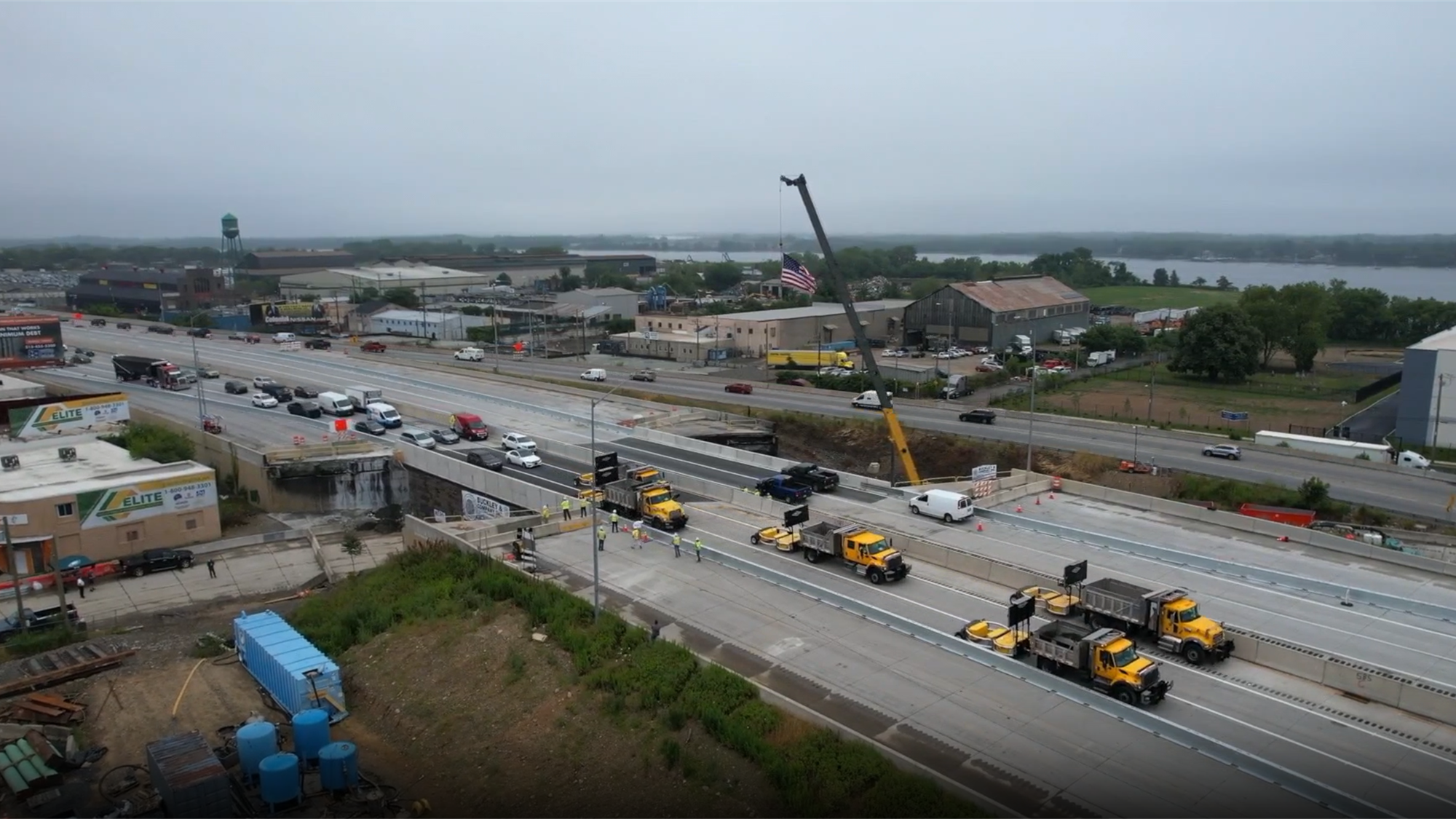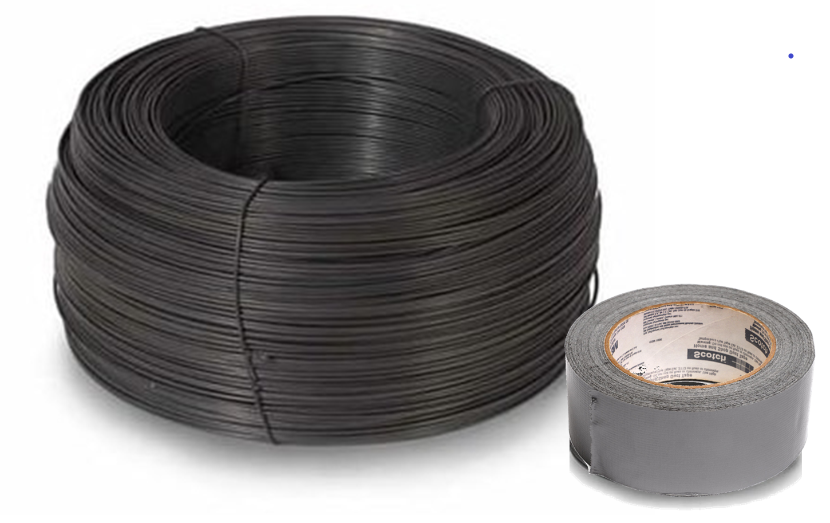“Sometimes using duct tape and baling wire is a terrible and/or dangerous choice.” — Kay Rhodes
On Sunday, June 11, 2023, a burning truckload of gasoline under an I-95 overpass in Philadelphia caused the bridge to collapse. At the time, officials estimated that it would take months to repair the bridge. Twelve days later, on Friday, June 23, that stretch of I-95 opened for traffic.
This amazing response was the result of extraordinary cooperation between the City of Philadelphia, the Commonwealth of Pennsylvania, the federal government, construction workers, suppliers, and contractors. The highway is open for traffic, but the overpass has not been repaired. They have succeeded, however, in putting in a temporary fix.
A Temporary Fix, Not a Repair
The temporary roadway is not an overpass. Instead, crews filled in the void with a foamed glass aggregate, making a road just wide enough to squeeze in six lanes—three southbound and three northbound. By filling in the void, rather than bridging over it, this section of road is no longer an overpass. Filling the void required 10,000 cubic yards (7,600 m3) of fill, much of which was diverted by the supplier from other, less urgent projects elsewhere in the country. One of the advantages of this fill is its low bulk density; it has a bulk specific gravity of about 0.24. That means that it won’t cause the ground underneath to compress and sink, which is why this was a better choice than normal fill.

I-95, opened on June 23, after the overpass collapsed on June 11. (Screen capture from Governor Shapiro, PennDOT 6/23 Briefing https://pacast.com/m?p=23308)
The Pennsylvania Department of Transportation still needs to oversee the restoration of the overpass. They need to build the outer decks on both sides to allow room for additional lanes and shoulders. They need to demolish the temporary lanes and remove the 2,000 tons of foam glass fill. Then, with all traffic temporarily routed over the outer lanes, they need to rebuild the inner lanes as an overpass. Only then can they reopen the overpass and highway exits north and south of this section of highway.
Although not intended to last more than a few months, the temporary fix was an amazing feat of highway construction. It would be dangerous, however, to use this as a model for highway construction. At its heart, this project was an instance of the duct tape and bailing wire methodology.
Duct Tape and Bailing Wire
We’ve all seen instances where something broke and in the interest of expedience, someone fixed it with duct tape or baling wire. In fact, no tool kit is complete without a roll of duct tape and a spool of baling wire. As Jamie Hyneman of MythBusters put it, “Duct tape is not the perfect solution to anything. But with a little creativity, in a pinch, it’s an adequate solution to just about everything.”
There is more to the duct tape and bailing wire methodology than duct tape and baling wire. It’s any time you use something outside of best practices because fast is better than good, because the additional risk of a quick and dirty approach is less than the benefit of taking a more deliberate, “best practice” approach. As Kay Rhodes put it in his blog on writing software code, “Quick and dirty hacks should be applauded, not derided. They are applied when we need to accomplish a goal, and the most important criteria is speed, not quality. It doesn’t need to be pretty. It doesn’t need to last forever. It just needs to hold up long enough to serve a short-term function”. But Rhodes is also quick to point out that duct tape and bailing wire solutions are great, but only in specific contexts.
Consider the Flixborough disaster.
The Flixborough Disaster
Almost 50 years after it happened in Flixborough, process safety professionals still talk about the Nypro explosion and use it as the poster child for the importance of management of change. The following is from the UK Health and Safety Executive report on the disaster:
On March 27, 1974, personnel at the Nypro plant in Flixborough, UK, discovered a vertical crack in Reactor 5 of a six-reactor train that was leaking cyclohexane, a flammable material. They subsequently decided to take Reactor 5 out of service and install a 20” bypass assembly to connect Reactor 4 directly to Reactor 6, so the plant could continue production while Reactor 5 was repaired.
Late in the afternoon of Saturday, June 1, 1974, the bypass ruptured, releasing a large quantity of cyclohexane. This formed a flammable mixture with air and upon finding an ignition source, resulted in a massive vapor cloud explosion. Of the 72 workers on site, 28 died and 36 others suffered injuries. Additionally, 53 people off site reported injuries.
The HSE had this to say about the cause: “A plant modification occurred without a full assessment of the potential consequences. Only limited calculations were undertaken on the integrity of the bypass line. No calculations were undertaken for the dog-legged shaped line or for the [flexible connections for the bypass piping]. No drawing of the proposed modification was produced.”
We often forget that for two months, the Reactor 5 bypass at Nypro performed exactly as hoped. The plant responded quickly to an unsafe situation with a temporary fix—”duct tape and baling wire”—and cut through the normal red tape to keep the plant running. It was a heroic effort and a success. Right up until it failed.
Then it was a disaster.
Temporary Means Temporary
There is a reason for best practices. When time is of the essence, however, and the cost of delay is catastrophic, best practices may not be the answer. But when we deviate from best practices it should be with the full knowledge that the duct tape and baling wire methodology is just a temporary fix. It is not a repair, just something to buy time. Never overestimate how much time has been bought.
We need to understand that a temporary fix is just that—temporary. We have an obligation to keep inspecting it, looking for the onset of failures that we don’t normally experience when using best practices. We need to keep in mind that we have little idea of how long our temporary fixes will hold, and we should never be lulled into believing that our duct tape and baling wire is a permanent repair.
If we do, we are likely to be facing a disaster.
